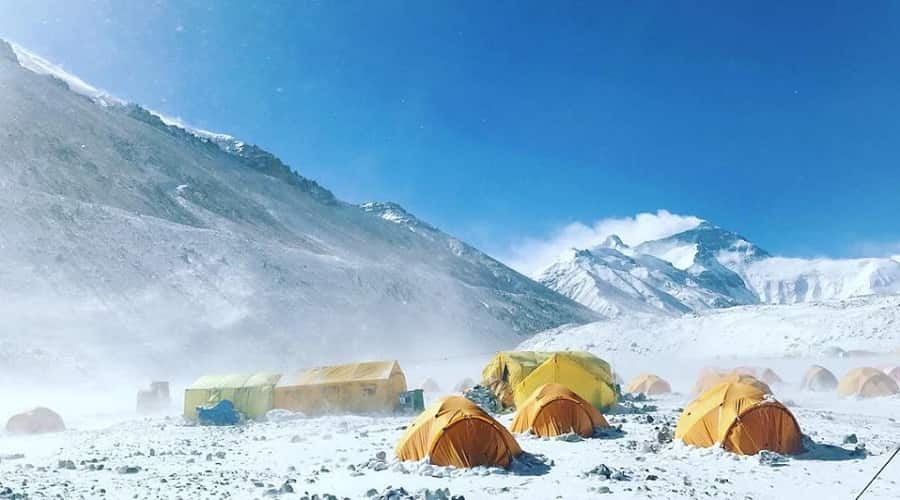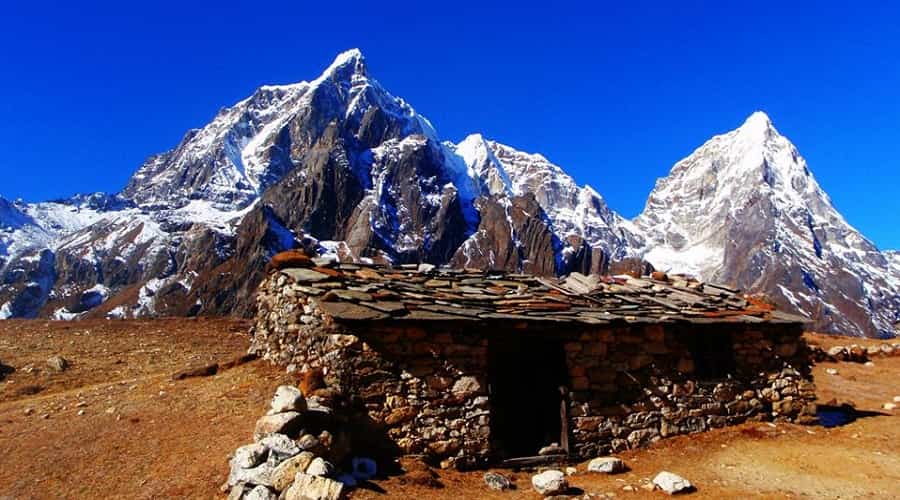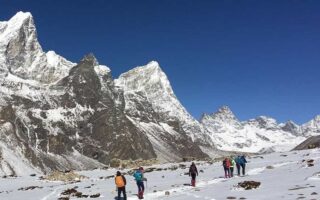Like every other country Nepal too has its unique style of architecture. It has been influenced by the different cultures and people living in the country. There are several structures that are worth mentioning. In fact, several of them have made it to the list of the world heritage sites. Most of them being in Katmandu, it is hard to be missed. Following are some of them.
Katmandu Durbar Square
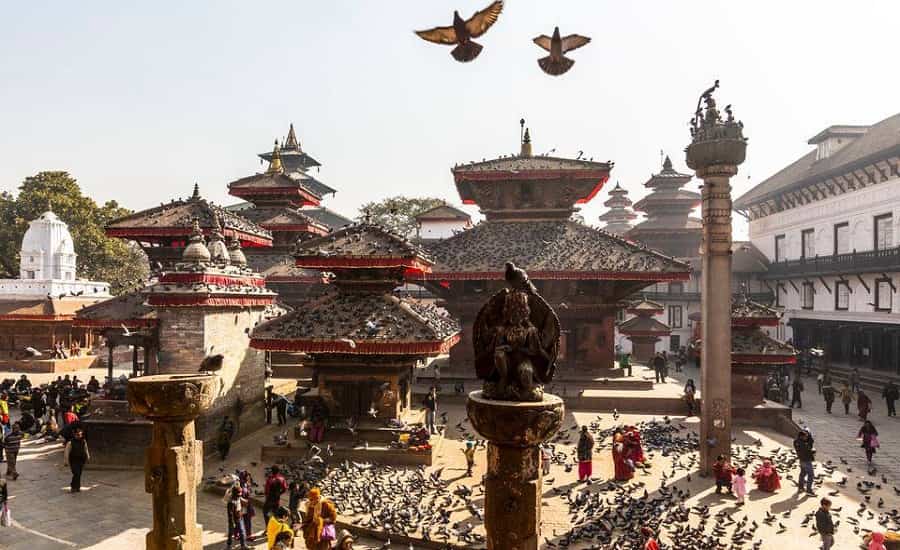
Durbar square refers to a place with several palaces. Katmandu Durbar Square is centrally located and has been in existence since the 12the century. It was built during the reign of the Malla Kings and even now it is the place where majority of the social, cultural and political events take place.
It has the most beautiful temples and various chowks that are very popular. The main attraction here is the Hanuman Dhoka, which is said to be a beautiful temple with Hanuman being the principle deity.
Other temples like that of the local goddess Taleju, the Kumari bhavan, Jagannath Temple and Kasthamandapa all boast of the fine architectural style adopted by the Nepal kings who ruled between the 12th and the 18th century. Till date, they hold a place of importance and reverence among the people of Nepal.
- Built by: Malla kings
- Built Year: 12th, 15th & 18th centuries
- Entry fee: NPR 150 for SAARC country, NPR 1000 for foreigners
- Timings: Tuesday to Sunday, 10:30 am – 4:30 pm
- Ideal duration: 3 – 4 hours
- Best time to visit: March to May – August to November
- Sightseeing places: Kasthamandap, Trailokya Mohan Narayan temple, Kumari Bahal, Taleju Temple, Basantapur Tower, Gaddi Baihak etc.
- How to reach: 20-25 minutes walking distance from Thamel, 20 minutes drive from Tribhuvan International Airport.
Patan Durbar Square
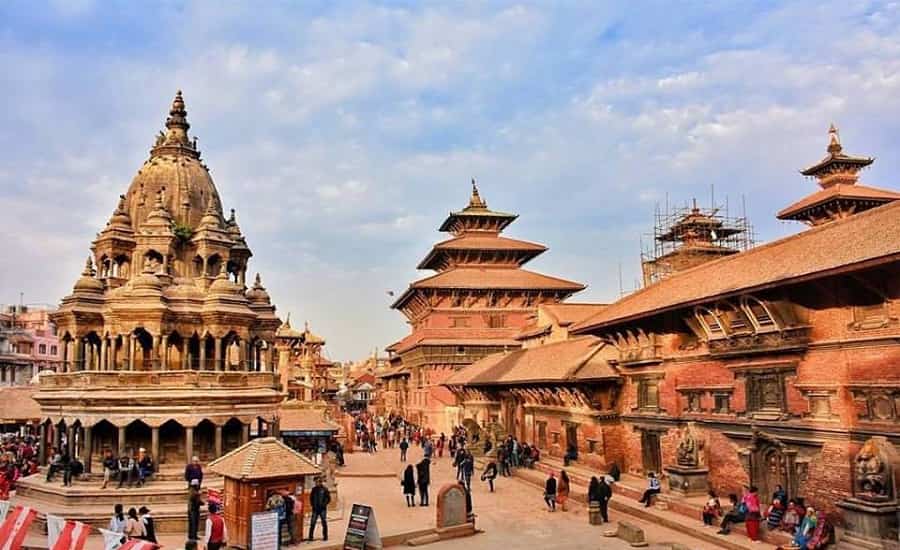
Patan Square is located in the city of Patan, at a distance of about 5 km away from Katmandu. Patan Durbar Square is named after the Patan family that ruled over the area. The family is still said to be living here. The main style of architecture that one gets to see here belongs to the Newari style of architecture.
The area has several temples worshipped even now by the Hindus. There are places of worship even for the Buddhists here. Among the temples, there is the Krishna temple, the Jagat Narayan Temple and the Kumbheshwor which boast of the most stunning architecture that Nepal can have.
There are also the Mahaboudha, Rudra Varna Mahavir, and the Ashokan Stupas which are a must-visit for Buddhists because of the reverence that they hold for these places. The tourists visit these places for the architecture marvel that they are. The Patans have always been popular for their style of architecture and they have the most skilled artisans known in Nepal.
- Built by: King Siddhi Narsingh Malla
- Built Year: 1667 A.D.
- Entry fee: NPR 250 for SAARC country, NPR 1000 for foreigners
- Timings: 10:30 AM to 4:30 PM
- Ideal duration: 2- 3 hours
- Best time to visit: March to May – September to November
- Sightseeing places: Royal Palace Patan, Patan Museum, Golden Temple, Krishna Mandir, Dattatreya Square, Nyatpole Temple Square etc.
- How to reach: 25-30 minutes drive from Kathmandu, 4 km from Tribhuvan International Airport.
Bhaktapur Durbar Square
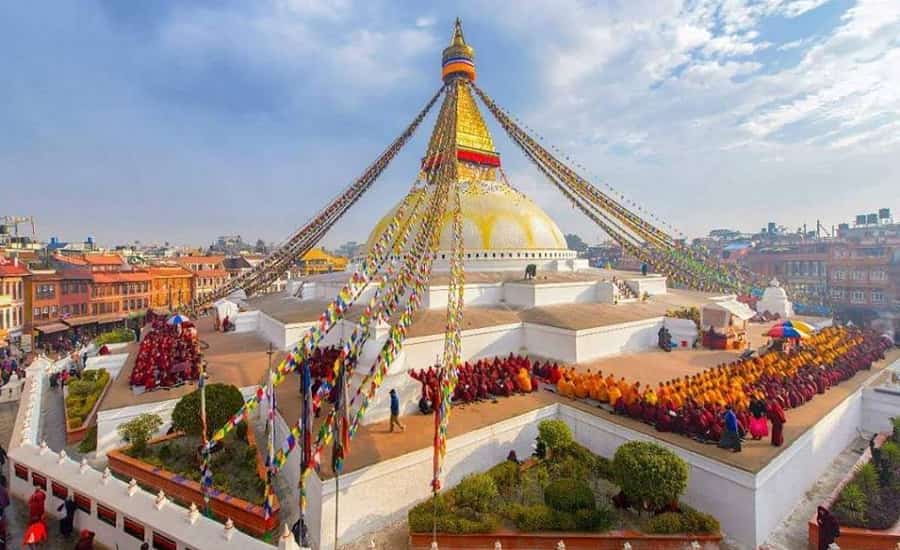
Bhakthapur is more known for the palace of 55 windows that is a must-see for all the people who ever visit Nepal. It is about 14 km away from Katmandu, the capital of Nepal. This square basically has Newari style of architecture. It contains both the pagoda style of buildings that is unique to the country of Nepal as well as the Shikhara style of buildings.
Here the palace of 55 windows is a must-visit, as it is considered as an architectural wonder. There is also the lion gate, the golden gate, and the art gallery that are of immense interest to the visitors. Among the temples, there are the Pashupati and the Dattatreya temple that boast of beautiful architecture.
- Built by: King Jitamitra Malla
- Year: 1696 A.D.
- Entry fee: NPR 500 for SAARC country, NPR 1500 for foreigners & Nepalese Nationals – free entry
- Timings: 7:00 AM to 7:00 PM
- Ideal duration: 2-3 hours
- Best time to visit: March to May – October to November
- Sightseeing places: 55 Window Palace, Changu Narayan, Dattatreya Temple, Nyatapola Temple, Taumadhi Square, Siddha Pokhari etc.
- How to reach: 15 minuets drive from Kathmandu, 8 km from Tribhuvan International Airport.
Swayambhunath Stupa
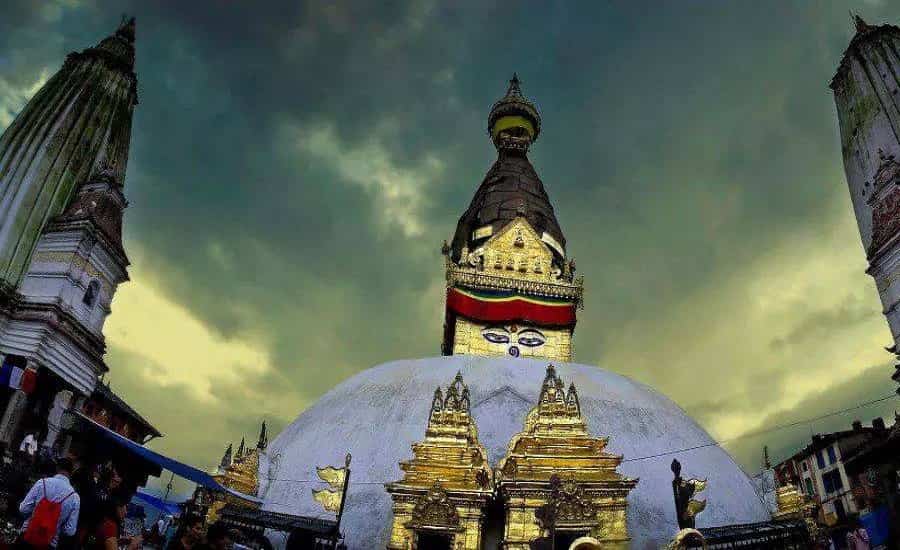
Nicknamed as the monkey temple due to the number of monkeys that roam the temple, the Swayambhunath temple is a beautiful structure. It is a conical wooden structure above which is a golden spire. The structure has beautiful eyes drawn on all sides representing the fact that god is present everywhere.
It was built about the 5th century and has been well maintained. Swayambhunath means the self exiting one. It is said that the valley was initially under water and it had a lotus, which radiated light. Manjusri drained the entire water revealing the Katmandu valley. That is how the valley came into existence and the light that emanated from the lotus became the temple.
Apart from the main Swayabhunath temple there are others like the Harati Temple and the Shantipur temple in close vicinity that are worth a visit. The Shantipur temple is said to be the abode of a tantric called Shankar Acharya.
- Built by: King Manadeva
- Year: 13th century
- Entry fee: NPR 50 for SAARC country, NPR 200 for foreigners & Nepalese Nationals – free entry
- Timings: 07:00 am – 10:00 am
- Ideal duration: 1-2 hours
- Best time to visit: March to May – October to November
- Sightseeing places: Swayambhunath Stupa, Buddha Amideva Park, Military Museum, National Museum, Eastern Stairway, Western Stupa, Great Thunderbolt, Stupa Platform etc.
- How to reach: 10 minutes drive from center of Kathmandu, 16 km from Tribhuvan International Airport.
Changu Narayana
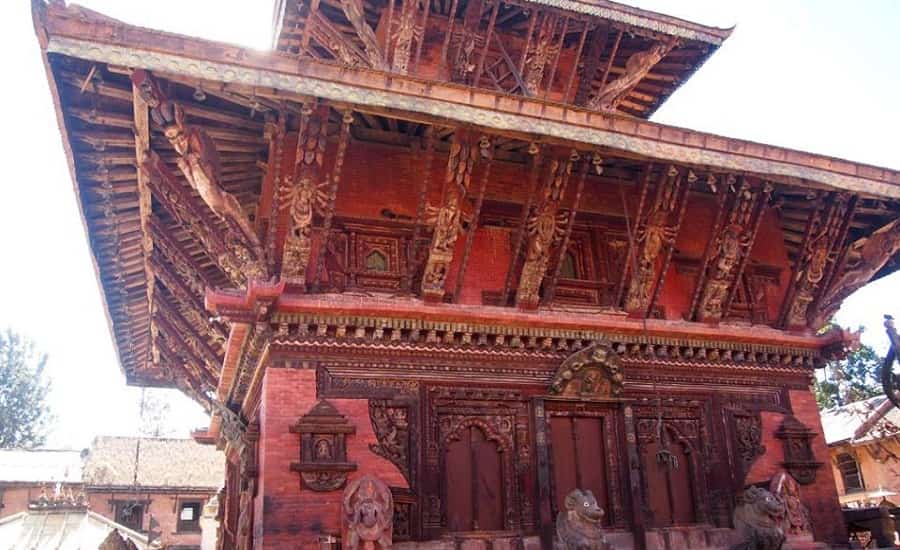
The Changu Narayan temple is located about 15 km from Katmandu. Built in the pagoda style of architecture, the temple dates back to about 323 A.D. It is one among the oldest temples where Lord Vishnu is depicted with ten arms and ten heads.
The name Changu relates to the place where the temple is located and Narayan is another name for Vishnu. The temple sports beautiful metal, stone and woodwork. The temple shows all the ten avatars or images of the lord in all his reincarnations.
Apart from Narayan who is depicted in ten different avatars there is also his vehicle, the mythical bird called Garuda who is shown kneeling down, paying obeisance to the lord? All these are a treat for the eyes and a lot of visitors come here to get a glimpse of the fine wood-carving and the metal and stone work that line the temple.
- Built by: Lichhavi dynasty
- Year: 4th century
- Deity: Lord Shiva
- Entry fee: NPR 100 for SAARC country, NPR 300 for foreigners
- Timings: 07:00 am – 09:00 am
- Ideal duration: 1-2 hours
- Best time to visit: Oct to Feb
- How to reach: 9 km from Tribhuvan International Airport, nearest airport is Bhikhna Thori Railway Station (95 km).
Pashupatinath Temple
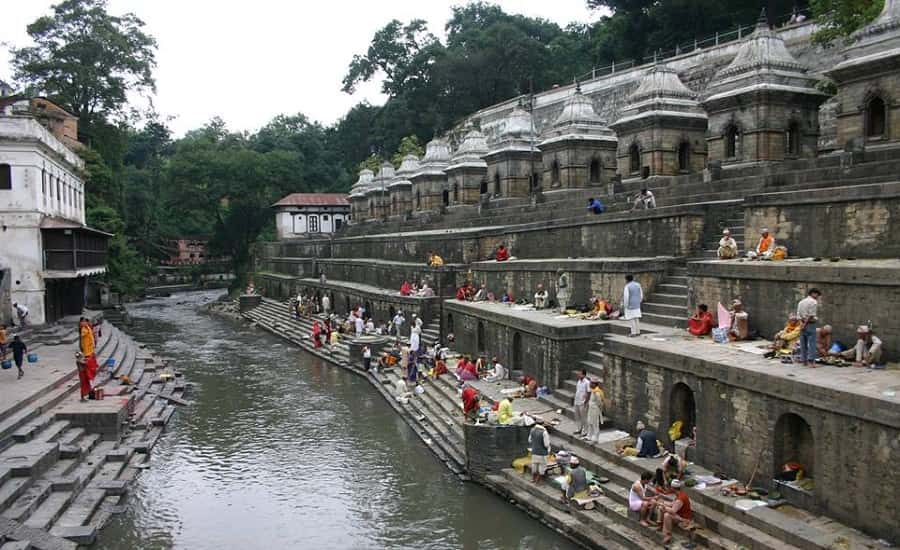
Another very famous monument is the Pashupatinath temple. The temple dates back to 400 AD and is mostly in the pagoda style architecture. The structure is beautiful with gold platted roofs, four silver doors and wonderful wooden carvings. It is about 5 km away from Katmandu. Apart from the religious significance among the Hindus others come here to witness the sheer magnificence of the architecture.
- Built by: Prachanda Deva (Licchavi king)
- Year: 5th century
- Deity: Lord Shiva
- Festivals: Shivaratri, Teej, Bala Chaturdashi
- Entry fee: 4:00 AM – 12:00 PM
- Timings: Free for SAARC country, NPR 1000 for foreigners
- Ideal duration:
- Best time to visit: 1-2 hours
- How to reach: 5 km from Tribhuvan International Airport, nearest airport is Bhikhna Thori Railway Station (90 km).
Boudhanath Stupa

This Stupa is considered as one among the largest stupas and is dedicated to the Buddha. This Stupa is located about 7 km to the east of Katmandu. It looks similar to the Swayambhunath temple with similar eyes representing the omnipresent god. It also has several prayer halls used by the monks here and also more than 108 miniature images of Buddha.
Though most of the structures constitute place for worship, they still hold such charm and beauty that people who visit the monuments are left speechless. Such is the skill of the people, who in those days without much technology and modern equipment managed to make a mark in their own way and left us a beautiful legacy that is hard to match.
- Built by: Licchavi dynasty
- Construction: 14th century
- Entry fee: NPR 100 for SAARC country, NPR 400 for foreigners & Nepalese Nationals – free entry
- Timings: 05:00 pm – 07:00 pm
- Ideal duration: 1-2 hours
- Best time to visit: Full moon night
- Sightseeing places: Monasterio Tibetano Boudhanat, Shechen Monastery, Drichu, Boudha Stupa Thanka Center, Padma Healing Arts etc.
- How to reach: 7 kilometers from Kathmandu, 10 minutes driving distance from Tribhuvan International Airport.
Lumbini
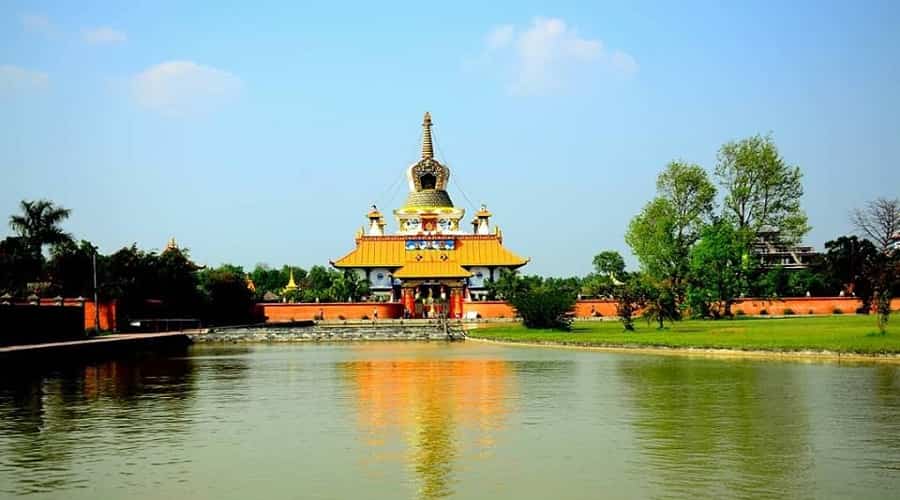
Lumbini is placed in the South-Western Terai of Nepal. Lumbini Birth Place of Lord Buddha is a standout amongst the loveliest places in Nepal and everywhere throughout the planet. Lord Buddha was conceived in really popular arrangements of Lumbini, which turned into a position of journey site. Lumbini is antiquated recorded spots and has turned into most engaging terminus of Buddhism. The hallowed region of Lumbini is one of the holiest spots with planet’s incredible religions and its remains hold vital confirmation about the way of Buddhist journey focuses from a quite unanticipated period. This is such an astounding place in Nepal. The fundamental attractions of Lumbini are Maya Devi Temple, Ashoka Pillar, and Buddhist Monasteries. Ashoka Pillar is one of the acclaimed noteworthy milestones. Maya Devi Temple is the prime fascination of this place that is the befitting samples of the Buddhist society.
- Location: Rupandehi District, Nepal
- Elevation: 150 m
- Famous for: Birthplace of the Lord Buddha
- Ideal Duration: 2-3 days
- Best time to visit: April – May
- Sightseeing places: Royal Thai Monastery, Ranighat Palace, Maya Devi Temple, World Peace Pagoda, Ramgram Stupa, Siddha Baba Temple.
- How to reach: 259 km from Tribhuvan International Airport, Kathmandu
Chitwan National Park
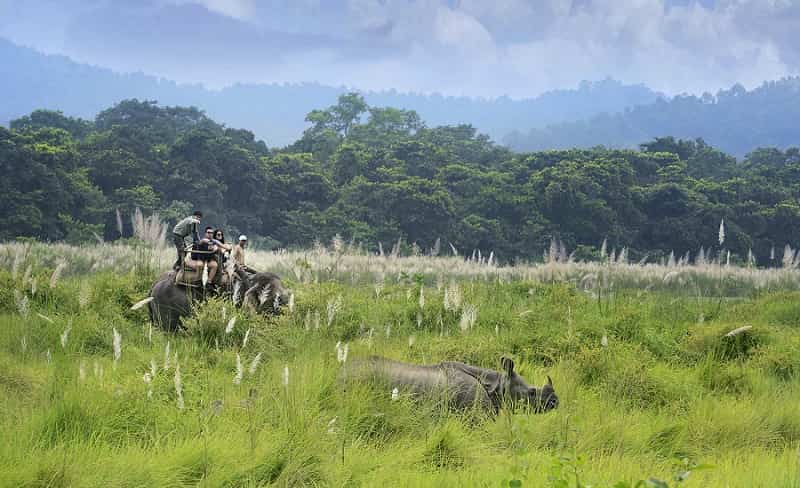
Chitwan National Park is one of the best Parks in Nepal, created in 1973 AD, where we can observe of different types of feathered creatures, plants, and creatures incorporating natural life, vegetations, and faunas. The recreation center incorporates in its region a piece of the Churia Hills is secured with deciduous woods ignoring the floodplains of Narayani, Rapti and Reu streams. An energizing elephant ride (Jungle Safari) offers to investigate the bush and untamed life.
Chitwan is home to a lot of people wild well-evolved creatures incorporating One-Horned Rhino, Royal Bengal Tiger, wild Elephant, Deer, wild pig, sloth bear, panther, buffalo, jackal and numerous reptiles incorporating Gharial Crocodile and numerous types of the winged animals. Chitwan is the best terminus for Jungle safari and natural life exploit sweetheart.
Likewise, an alternate most critical variable of Wildlife Tour in Chitwan is the bright Tharu Culture, their method for living, society and convention and heart touching Tharu Dance.
- Province: Bagmati Province
- Established: 14th century
- Area: 2,238.39 km2
- Elevation: 415 m
- Best time to visit: October to March
- Sightseeing places: Chitwan National Park, Narayani River, Bishazari Tal, Tiger Residency Resort, Tharu Cultural Museum and Research Center, Jalbire Waterfall.
- How to reach: Nearest airport- Bharatpur Airport
Janakpur
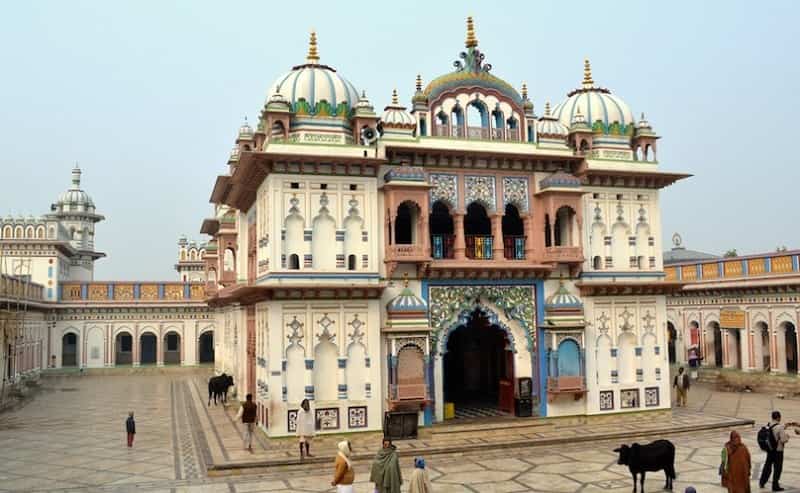
Janakpur, situated in the south-central part of the Terai plains, was formerly the capital of the ancient kingdom of Mithila, and its rich cultural heritage continues to thrive in the city to this day. Hindus believe this place to be the one where ram married Sita (Janaki), and every year people visit this place to celebrate their wedding anniversary.
The 19th-century temple with three-story and 60 rooms is the largest temple of Nepal called the ram-Janaki temple. Janakpur consist of several sacred ponds spread all over this place.
- Famous for: Janaki Mandir, Ponds and Mithila Art
- Timings: 30 AM – 11:00 PM
- Entry fee: No entry fee
- Best time to visit: May, July, and August
- How to reach: 45 km driving distance from Sitamarhi, 225 km from Tribhuvan International Airport.
